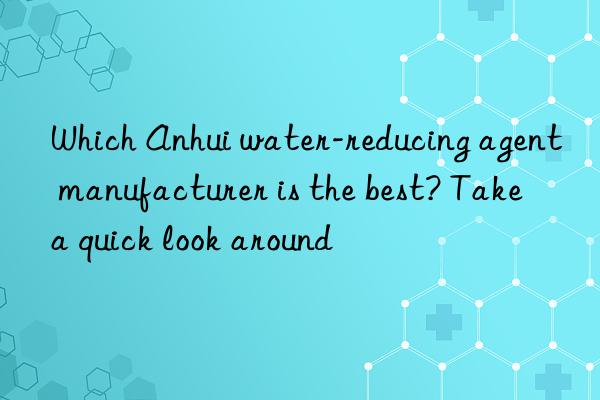
Which water-reducing agent manufacturer is the best? High-efficiency water-reducing agents effectively reduce the slump loss of concrete, improve the workability of concrete, improve fluidity, and play an important role in high-performance concrete, but so far There is still no perfect theory to explain the action mechanism of high-efficiency superplasticizer. This article will introduce you to the superplasticizer manufacturers.
High-efficiency water-reducing agents have the advantages of high water-reducing rate and good slump-preserving performance. They are widely used in the concrete industry and have also become a hot spot in domestic and foreign research. Polycarboxylate water-reducing agent is a high molecular polymer with a comb structure formed by copolymerizing macromonomers and small molecular monomers. Commonly used small molecule monomers are mainly acrylic acid and its derivatives and maleic anhydride. The detection of monomer residues in water reducing agents is beneficial to the research on product synthesis processes.
The polar hydrophilic groups of high-efficiency superplasticizers are directionally adsorbed on the surface of cement particles, and are mostly associated with water molecules in the form of hydrogen bonds. In addition, the hydrogen bond associations between water molecules form a It forms a stable water film on the surface of cement particles, prevents direct contact between cement particles, increases the sliding ability between cement particles, and acts as a lubrication, thereby further improving the fluidity of the slurry. Which water-reducing agent manufacturer is the best in Qingdao? The tiny bubbles in the cement slurry are also wrapped in polar groups that directionally adsorb the water-reducing agent components, so that the bubbles and bubbles and the bubbles and cement particles also repel each other due to the same electrical properties. Similar to adding many microbeads between cement particles, it also plays a lubricating role and improves fluidity.
In accordance with the technical specifications for the application of concrete admixtures, a certain admixture that has been tested to meet the relevant standards is added to the concrete (or mortar) prepared by the cement that can use this type of admixture according to regulations. If the desired effect can be produced, the cement is considered to be compatible with the admixture; on the contrary, if the desired effect cannot be produced, there is incompatibility between the cement and the admixture. When the high-efficiency water-reducing agent is incompatible with cement, it can be reacted intuitively and quickly, such as poor fluidity, low water-reducing rate, hardening and heating of the mixture, excessive slump loss, etc.;
The solid content of the polycarboxylate water-reducing agent should not be too high, and the amount of liquid water-reducing agent should be controlled at 2.5% to 3.0% of the total cementitious material. In this way, if the total amount of cementitious material is 370kg, then the amount of water reducing agent per cubic meter will increase from the original 5.55 to 7.40kg (the original dosage is 1.5% to 2.0%) to 9.25 to 11.1kg. In this way, each cubic meter of concrete water-reducing agent increases, but the solid content decreases, and the cost of each cubic meter of concrete water-reducing agent remains unchanged. Due to the increased unit dosage, measurement errors and production errors are reduced, ensuring the stability of concrete production.
During actual production, the moisture content of the sand must be strictly controlled. Excessive moisture content will lead to large fluctuations in concrete water consumption. Too small a moisture content will increase the adsorption of the water-reducing agent by the sand. The moisture content of the sand should be controlled between 4% and 6%. When feeding, the water-reducing agent should be avoided from direct contact with the dry sand, and the mixing time should be correctly controlled.
The molecular structure of high-efficiency water reducing agent has a great influence on its plasticizing effect, which has been discussed previously. In addition, other factors such as the dosage and form of the water-reducing agent have an impact. When the dosage of superplasticizer is too high, its dispersion may affect the hydration products and hinder the bonding between them, thus delaying the strength growth and reducing the final strength. Melamine-based high-efficiency water-reducing admixtures and sulfamate-based high-efficiency water-reducing admixtures can only exert a good plasticizing effect when used as water agents during construction. </p

 微信扫一扫打赏
微信扫一扫打赏

